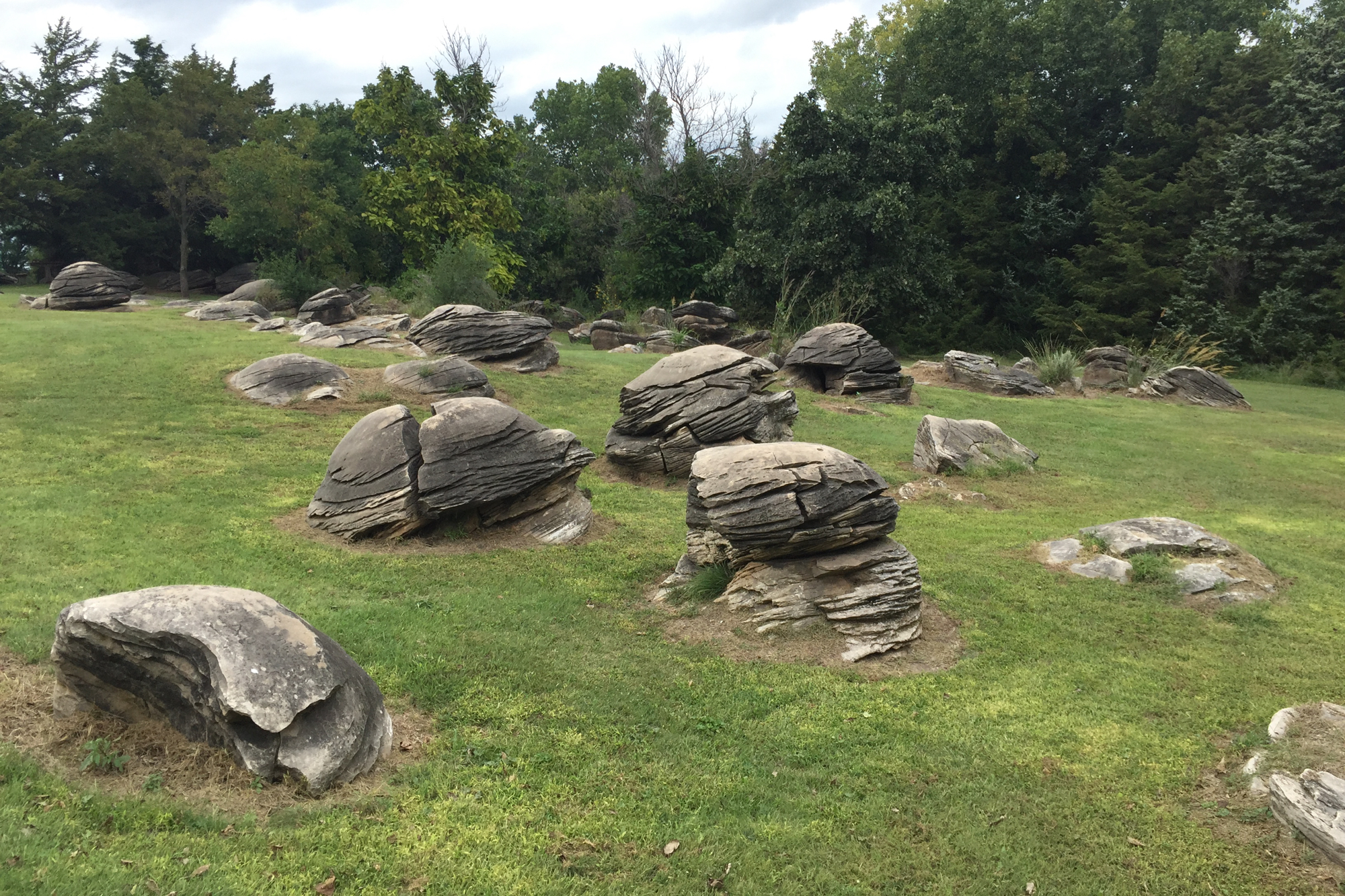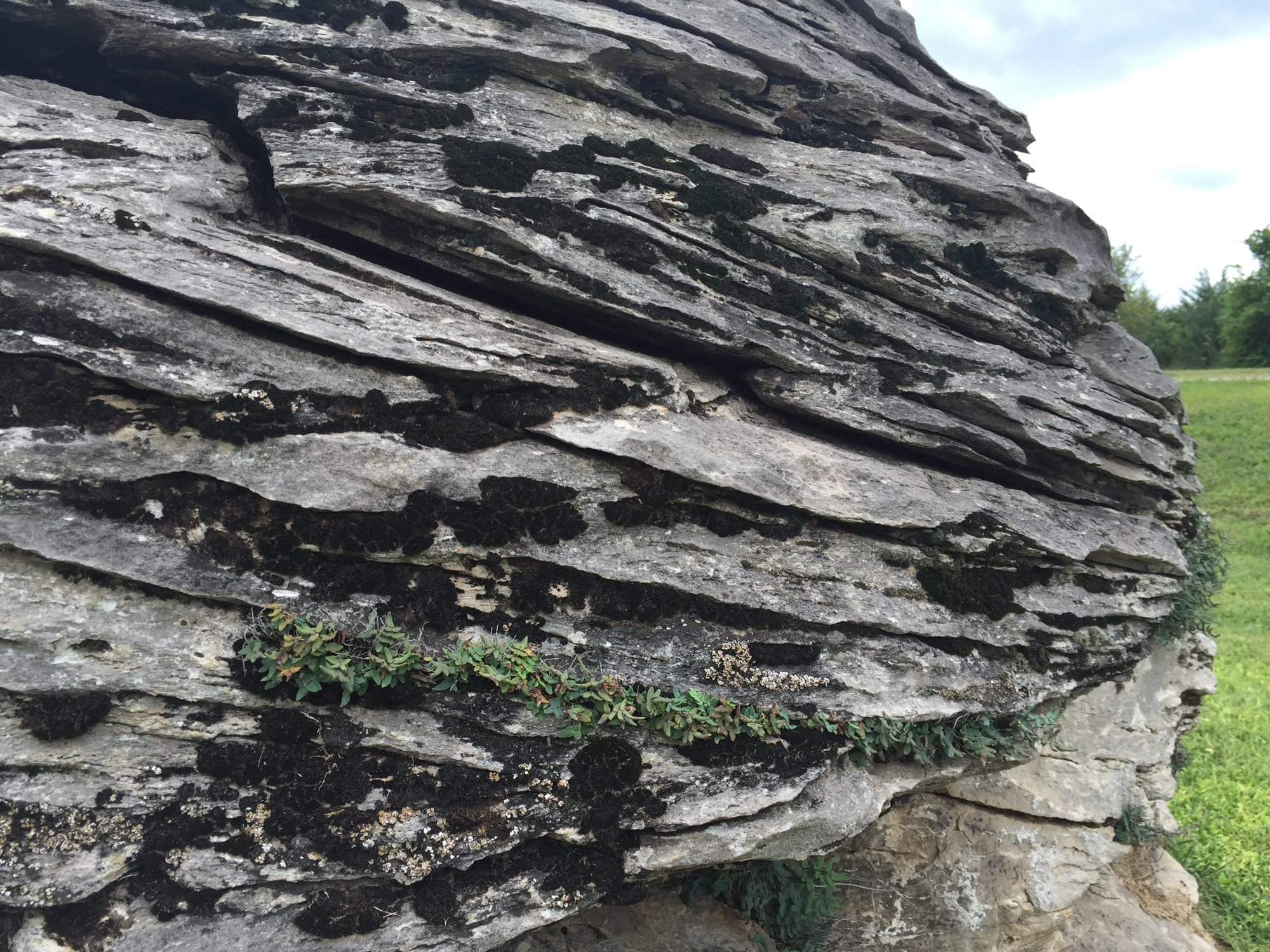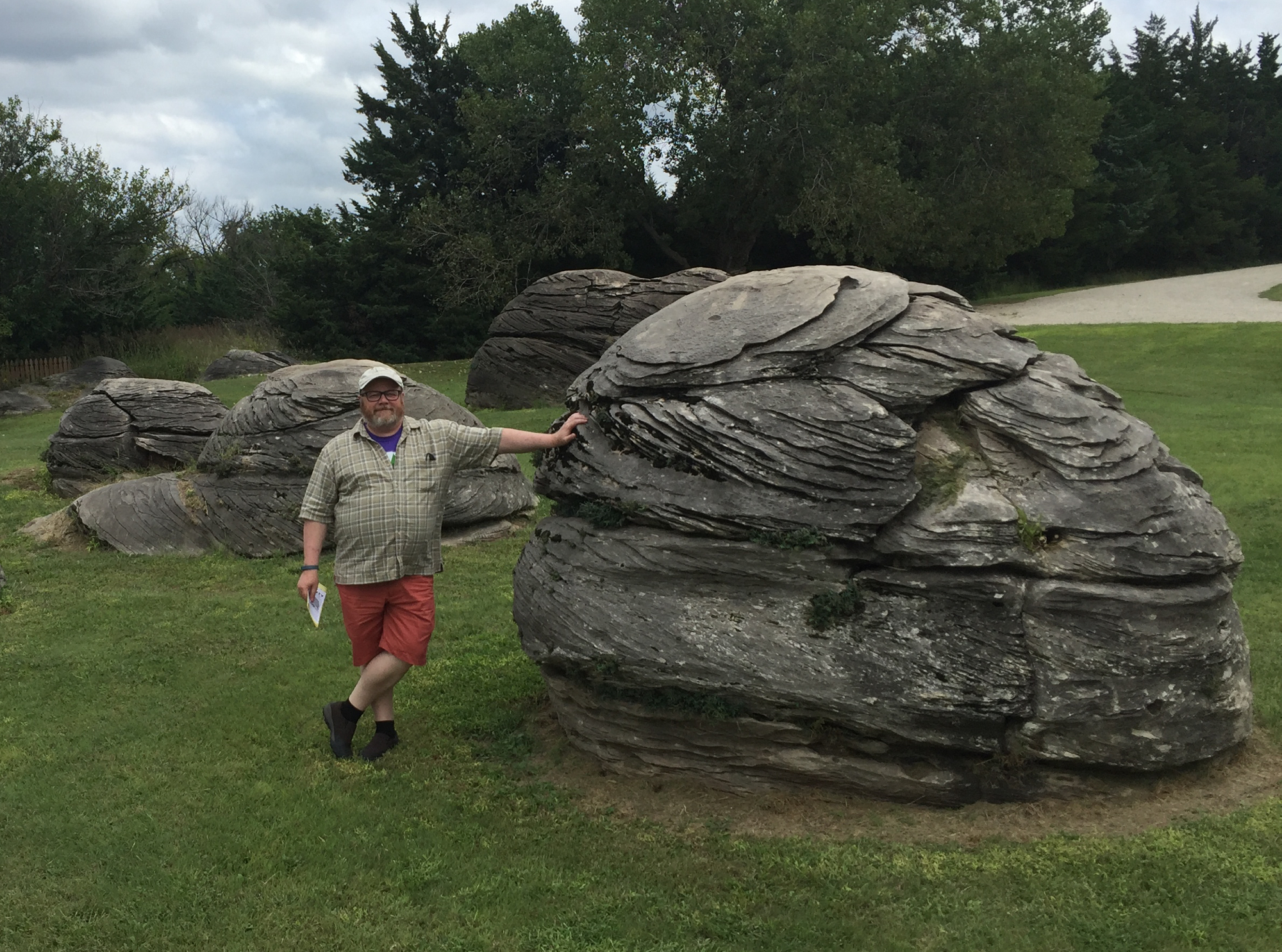Rock City: Sandstone Concretions in Kansas

Rock City is a park in north-central Kansas that features more than 200 spherical rock formations, some with diameters that are up to 27 feet (8 meters). The site, which covers an area that's about the size of two football fields, has three clusters of these examples of sandstone concretions.
The spheres, known as "cannonball concretions," formed about 100 million years ago during the Cretaceous Period, when areas of Kansas were covered by an inland sea, according to the Kansas Geological Survey. Over time, groundwater circulated through the sandstone and deposited a limy cement that grew outward in all directions from either calcite crystals or limy fossil fragments scattered throughout the sandstone. As the softer, uncemented portions of the sandy rock weathered away, the spheres of cemented sandstone remained.
The spherical concretions slowly increased in size as additional layers of sand grains were cemented, according to Rock City, the local nonprofit organization that owns and operates the park. Eventually, wind, rain and floods eroded the softer, surrounding sandstone. This left many of the cement-hard concretions totally exposed, while others are still partially embedded, with only their rounded tops showing.
The concretions at Rock City show signs of cross-bedding — angled lines that formed in the sand as it was deposited, probably by water currents — according to the KGS. The concretions vary greatly in size and shape. Some are spherical, while others have truncated, flat tops. Some are loaf-shaped. They range in diameter from 10 to 20 feet (3 to 6 m) with an average diameter of 11.8 feet (3.6 m).
History
It is not known who discovered the formations at Rock City. The first written reference to the rocks appeared in "Geology of Kansas," by B.F. Mudge, a book published in 1878, according to Paul V. Heinrich in a 2007 article in the Backbender's Gazette, the newsletter of the Houston Gem & Mineral Society.
"Well, they've been here forever, of course," Mary Koch, an employee at the Rock City information center and gift shop, told Live Science. "People from town have always come out to picnic and camp out here." Etched initials and expressions of undying love are evidence of generations of visitors spending time roaming around the rocks.
Koch said that there was an Indian legend that said that the rocks were Thunderbird eggs. (The formations are not, however, geodes, and should not be confused with thunder eggs.) The rocks were a landmark for the pioneers crossing the prairie, Koch said. From a distance, "at first they thought they were buffalo lying in the grass," she said.
Get the world’s most fascinating discoveries delivered straight to your inbox.
Other concretions
There are several other sites where cannonball concretions have formed. The formations in Rock City, however, "are unique for their large size, number, and concentration in a small area, their range of shapes, surface ornamentation and accessibility," according to W.H. Schoewe, in "The Geology of 'Rock City,'" a 1937 article in the journal Transactions of the Kansas Academy of Science.
According to Heinrich, other locations where similar cannonball concretions can be readily visited include:
- Red Rock Coulee Natural Area, Alberta, Canada
- Theodore Roosevelt National Park, North Dakota
- Koekohe Beach, South Island, New Zealand
- Zavidovici, Bosnia and Herzegovina
Visiting Rock City
Rock City was designated a National Natural Landmark in 1977. It is located 3.6 miles (5.8 kilometers) south of Minneapolis, Kansas, and it is open from 9 a.m. to 5 p.m. daily, from May 1 to Sept. 1. A small admission fee is charged.
Additional resources
Tim Sharp was Live Science’s reference editor from 2012 to 2018. Tim received a degree in Journalism from the University of Kansas. He worked for a number of other publications, including The New York Times, Des Moines Register and Tampa Bay Times, and as an editor for the Hazelden Foundation, among others.






